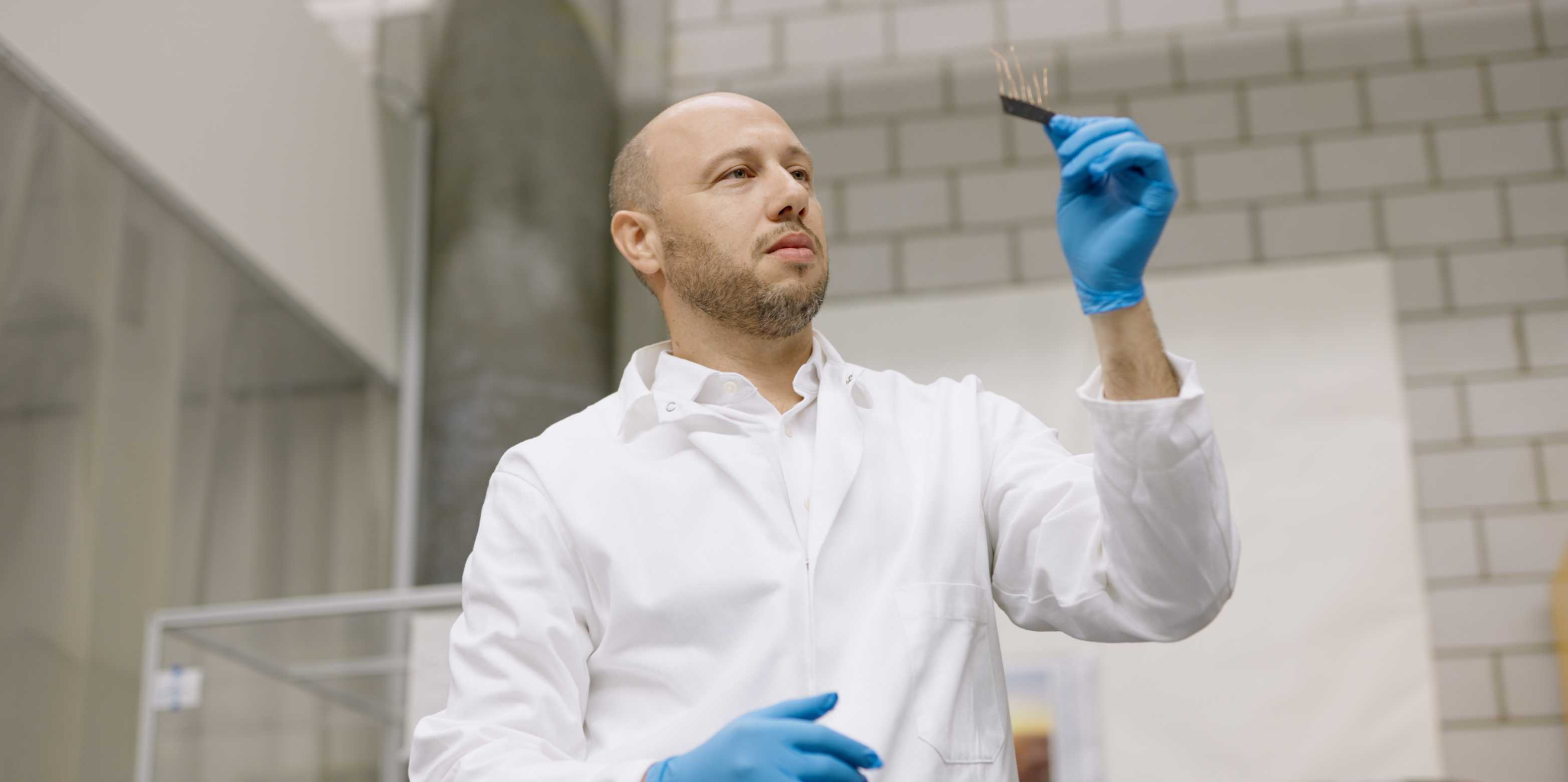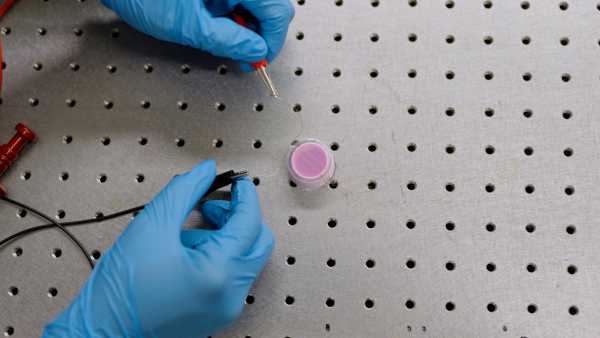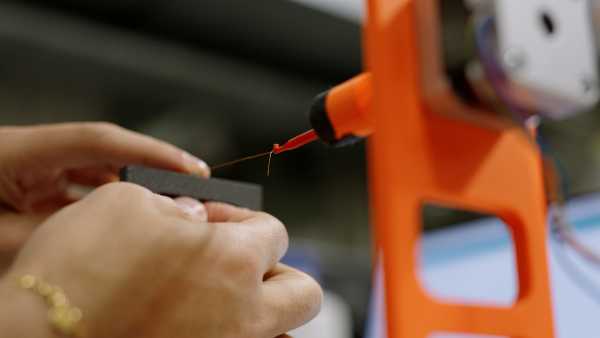For many patients waiting for a donor heart, the only way to live a decent life is with the help of a pump attached directly to their heart. This pump requires about as much power as a TV, which it draws from an external battery via a seven-millimetre-thick cable. The system is handy and reliable, but it has one big flaw: despite medical treatment, the point at which the cable exits the abdomen can be breached by bacteria.
ETH Zurich researcher and engineer Andreas Kourouklis is working to soon make this problem a thing of the past. With the support of ETH Zurich Professor Edoardo Mazza and physicians from the German Heart Centre in Berlin, Kourouklis has developed a new cable system for heart pumps that doesn’t cause infections. This is particularly important given that wireless methods of transmitting power remain unavailable to patients in the foreseeable future. Kourouklis has received a Pioneer Fellowship from ETH Zurich to advance his technology.
Thin wires with craters instead of a thick cable
“The thick cable used in existing ventricular assist systems creates an open wound that doesn’t heal and severely compromises patients’ quality of life”, Kourouklis says. Scar tissue with a limited blood supply forms around the exit point. This not only impairs the skin’s ability to heal itself but also increases the risk of infection. Since the outer layers of the skin are wounded and loosely attached to the flat surface of the thick cable, they grow in downwards. As a result, bacteria can travel from the surface of the skin into deeper tissue layers, often leading to patients having to struggle with infections and rehospitalisation.
The ETH Zurich researchers have come up with a technology to remedy the situation. Instead of powering the heart pump via a thick cable that is much stiffer than human skin, they use several thin and flexible wires with a rough, irregular surface. Kourouklis and his team compare their approach with the way in which human hair breaks through the skin without causing infections: “More flexible wires whose surface is full of microscopic craters help the skin heal,” Kourouklis says. The reason for this is that the outermost layers of skin adhere better to these wires and don’t grow inwards. New tissue forms more quickly, and the skin is more likely to remain intact as a barrier against bacterial infection.




